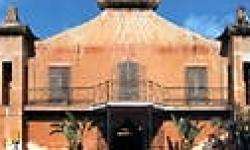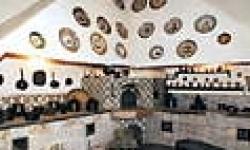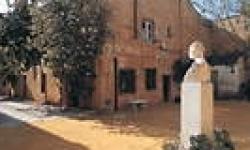Museo Pitre houses ethnology and cultural anthropology books and volumes on Sicilian traditions. The Museum was founded in 1910. In 1934 the state gave the Palazzina Chinese and Favorita Park to the Town of Palermo, Italy. The Museum, Museo Pitre is housed in one of the dependencies of the same Chinese Palazzina, right south of the prospectus itself, in so-called "Casina the Chinese." The Palazzina Chinese, which are visited only a few rooms is a delightful blend residence where a harmonious art and neoclassical "cineserie" fashion at the time. Beautifully furnished and decorated, it was the favorite of Ferdinand III and Maria Carolina.
Inside the Casina shows a rectangular enclosure where they distributed the various buildings. To the north are the stables, with five naves covered with vaults, while adjacent to the same block is the kitchen, east restarting with four large bays on cross central pillar. The east side of the building is occupied by a body double-decker, probably originally intended to housing of servitude, and to the west of that is a building with other departments and the church.
Pitre, considered the greatest scholar of the popular Palermo, Italy, collected twenty five volumes in his "library of popular traditions." Through objects found in the Museum you can find, perfectly reconstituted, mainly peasant Sicilian tradition that countless rulers have failed to tarnish altogether.
Museo Pitre,is divided into different sections: The section devoted to the shepherds that includes cattle and sheep collars, sticks, spoons and other artefacts carved wooden tip of a knife; The section devoted to paintings on glass which includes artefacts dating from the late eighteenth century;. The section devoted to the traditions of chivalry he sees the development of a hall of the Opera House Pupi.
The Museum in Palermo is still undergoing restructuring, is open only in part.



Museo Pitre reviews
Login to comment